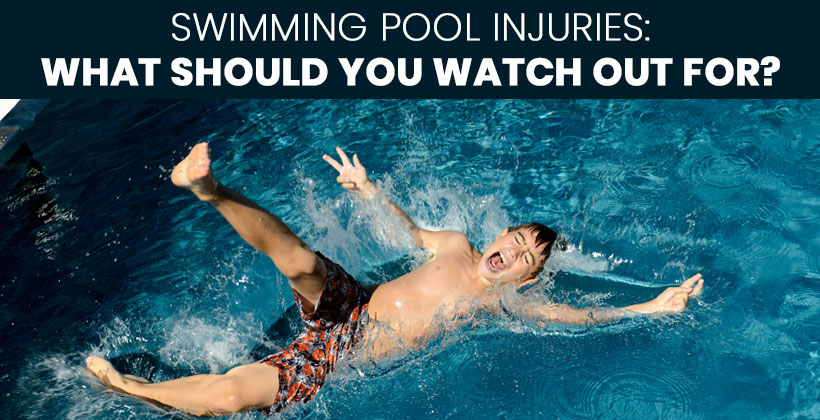
Common Rules To Follow While Using A Public Swimming Pool
March 10, 2020
Swimming Safety Tips During The COVID-19 Pandemic
April 10, 2020Swimming pools are a source of fun during summers. However, they aren’t always safe. You need to be very careful around swimming pools to avoid injuries. Your pool located in a backyard, a resort, or a public park, can be the site of serious accidents. Here is a list of injuries that people can experience due to negligence:
#1. Fatal Drowning
Swimming pools pose a serious drowning risk, especially for young children.
According to the CDC, drowning is the main cause of children’s unintentional death between the ages of 1 and 4. According to the U.S. Consumer Product Safety Commission, on average 390 people die in a year due to drowning in a swimming pool or at a spa. Roughly 77 percent of those deaths involved kids younger than 5.
To avoid such a situation, secure your swimming pools with Life Saver’s pool fence. The secured pool fence will not allow your kids to access the pool in your absence. Our exclusive features make your pool safer, attractive, and more convenient. We offer a lifetime warranty for the pool fence and it ensures that you and your family can enjoy swimming without any worries by offering factory-direct customer support.
#2. Non-Fatal Drowning
“From 2005-2014, there were approximately 3,536 fatal unintentional drownings (non-boating related) annually in the United States — about ten deaths per day. About 1 in 5 people who die from drowning are children of age 14 years and younger.”
People who get submerged underwater are prone to serious injuries and premature death later on.
The prolonged submersion can lead to various complications such as:
- Brain damage due to oxygen deprivation, resulting in coma, persistent vegetative state, or brain death.
- Deficiencies in memory, speech, attention, and other cognitive abilities.
- Impairments in motor abilities.
You can avoid non-fatal drowning injuries by wearing pool safety gears such as vest and life jacket, etc.
#3. Slipping and Falling
The floor around the swimming pool gets slick due to water and even when people aren’t running, they may slip which can lead to serious injuries, including:
- Traumatic brain injuries (TBIs) – Falling is a major cause of Traumatic brain injuries. Falls were responsible for approximately 47 % of all emergency room visits, hospitalizations, and deaths associated with TBIs in one year.
- Spinal cord injuries – Spinal injury can lead to paralysis and long-term disability.
- Fractures and soft tissue damage – The impact from a fall on a harder surface like concrete can shatter your ankle, fracture your hip, or lead to sprained wrists.
- Drowning – People who slip and fall can end up underwater. If they don’t know how to swim, or if they’re unconscious because of a head injury from the fall, they’re at a high risk of drowning.
You can avoid such injuries by installing pool safety signs near the pool. Installing a slip/ fall hazard sign will help people to know about the slippery area and they can get careful about it.
#4. Diving Injuries
In more than 17 years, approximately 111,341 people of age 20 years and below needed emergency medical attention due to diving injuries in swimming pools around the country. Some of the common diving injuries include:
- Fractures.
- Head, neck, and face injuries.
- Lacerations.
- Soft tissue injuries.
Don’t dive in water that is too shallow and if you’re diving, do it with somebody’s assistance.
#5. Pool Drain Injuries
Pool drains have powerful suction that can cause severe injuries, including brain injuries due to entrapment in water for a long time, massive damage to the intestines and other internal organs. Pool drain suction can entrap people underwater that can lead to drowning. The pool drain injuries can be avoided by installing Anti-Entrapment Systems. This automatically adjustable system when senses an entrapment, immediately causes the pool pump to lose prime and thereby releasing the entrapped victim.
#6. Electrocution
Faulty underwire lighting, the use of pumps, vacuums, and power washers that are not grounded – all of these hazards present a greater risk if the receptacles are not protected by Ground-Fault Circuit-Interrupters (GFCIs). “The GFCIs is the best safety device to prevent electrocution,” according to the CPSC. Problems with the wiring can result in shocks that are deadly or that lead to serious, non-fatal injuries.
#7. Exposure to Pathogens
According to the CDC, even if a pool has proper chlorine levels, the chlorine doesn’t immediately kill all germs.
Pathogens can cause serious infections so it’s really important to clean your swimming pools from time-to-time. Book an inspection to test the presence of pathogens and keep your swimming pool water clean.
Signs of Potential Swimming Pool Negligence
- Lack of secure fencing around a pool area
- Absence of secure drain covers
- Lack of warning signs such as “wet floor”, “no diving”, and “electrical hazard,” etc.
- Inadequate supervision from lifeguards or from anyone entrusted to look after children
- Inadequate or inaccessible rescue equipment for the pool, such as rescue tubes and first aid kits
- Poor lighting around the pool area
- Evidence of flawed pool and pool area installation, including cracks, loose components, and faulty wiring
- Evidence of poor maintenance, including degraded components and substandard cleanliness
- Safety or health code violations at a facility with a pool
To keep yourself and your kids safe, we recommend you to install Life Safer’s pool fence.
Want to know more about Life Saver’s pool fence, fill out the form to be contacted by your local Life Saver Pool Safety Specialist. They will be in touch with you right away.




